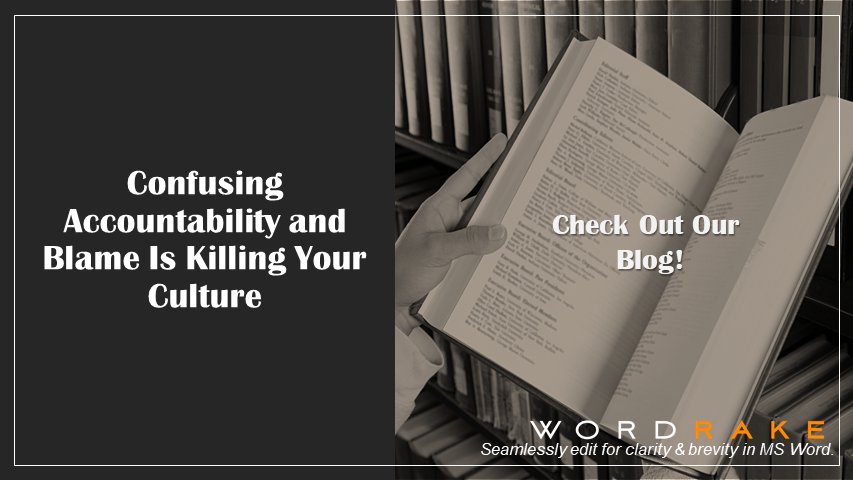Giving and receiving feedback on our writing is as much emotional work as it is intellectual. Writing is a process of opening one’s thoughts to examination and critique by whoever reads it, and whether we are deeply invested in the topic or creating a routine work report, it’s an exercise in vulnerability. Author and writing teacher Erin Lebacqz describes the editing and feedback process, and what we can do to be better at giving and receiving recommendations.
“Documents in our agency literally go through six rounds of edits!”
“My supervisor redlines my writing, but it feels like her comments are just based on personal style or preference!”
“I’ll submit a draft, and my direct supervisor will say he wants it one way, while the next level supervisor will say she wants it an entirely different way!”
Frustration around the editing and feedback process isn’t exactly rare. Some organizations have internal editing processes that can beat a writer into the ground. In others, edits can feel like the result of personal peeves and preferences rather than needed fixes and revisions.
But the truth is, we need feedback on our writing, and we can grow from both getting and giving it. Even the most reflective among us still need an outside perspective now and then when we’re writing. When we give feedback, we learn too, and we even get the opportunity to strengthen relationships along the way.
So how can we make the process less dreadful and more productive? Can getting and giving feedback actually be something to look forward to at work?
Feedback Feels Emotional
Getting feedback on our writing can feel like getting feedback on ourselves. No wonder it makes people nervous! As a writing teacher, I changed the way I give feedback about 15 years ago, and have seen some positive results. My goals when I give writing feedback are now as much about the person I’m giving feedback to—and our relationship—as they are about the written product itself.
When I started teaching writing, I would put comments in the margins and do my best to help the writer improve a particular piece of writing. But to really help another person through writing feedback, we want to help them grow as a writer overall—not just do better on the draft they’re working on. This means providing feedback that helps them develop their own skills, independence, and confidence as a writer going forward.
Working with college students, I quickly realized how personally they could take my writing feedback. If I were to say their writing wasn’t good, they might project that onto themselves and think they’re not good in some way—not a good student, for instance.
One of the first changes I made to my feedback process was to manage the way I talked about them as a writer. I started complimenting them directly, using the word “you” when they did great. I might write, “You supported your claim so well in this paragraph!”
On the other hand, when their writing needed work, I’d say, “This paragraph needs more evidence” as opposed to “You need more evidence here.” I’d talk about their strengths as a writer, but when I found weaknesses, I’d shift to talking about the product—the paragraph, the page, the report, the bibliography.
By attending to the emotions of the receiver, we can make the feedback process useful, helpful, and collaborative. We can build deeper relationships through trusting conversations about our work. I got to know so many of my students on a more personal level through not only reading their words but helping them make their writing what they wanted it to be.
This concept applies at work too. When we supervise others, whether as a teacher or as a manager, our feedback on their work can ring loudly in their ears afterwards. To help others develop their writing, we want to avoid putting them on the defensive and keep the conversation growth-oriented. One of the most important factors in this equation is trust.
Feedback in the Workplace: It’s All About Relationships
Who doesn’t feel a little nervous when they submit their writing to be reviewed by a colleague or supervisor? There’s a lot at play when we share our work. Asking for and receiving feedback may feel uncomfortable if:
- The giver and receiver of feedback have limited trust in their relationship.
- The giver and receiver of feedback have a large power differential between them.
- The feedback doesn’t feel actionable or fair.
Power and trust differentials make the feedback process feel more risky. If you’re giving feedback to someone with a much “lower rank” than you, or someone you don’t know well, put in some trust-building time, too. Ask more questions of the writer. Call out their expertise and their successes in the document you’re helping with. Give advice but try your best to leave the decision-making to them.
As a feedback giver, we also have to make choices about what writing advice we provide or hold back. We don’t necessarily say every thought we have about a piece of writing. Rather, we give feedback according to specific goals the writer has for the piece—and we give feedback the writer wants. This means it’s worth having some conversations up front: What kind of advice is the writer looking for? What kind of advice will help them develop skills without losing confidence?
Feedback in the Workplace: Clarity to the Rescue
The best way to prevent losing trust through the feedback process is simply to talk about the feedback process itself. When you’re the receiver, be clear about the kind of advice you’re seeking. When you’re the giver, ask the receiver what kind of advice would be helpful. Keep talking about the process and together, arrive at a process that works for both feedback giver and receiver.
The quotes at the top of this blog post are real. I’ve taught in agencies who do six rounds of edits and in ones where the editing process induces panic among employees. Through purposeful conversations about a productive feedback process, we can avoid these time wasters and risks to relationships. By focusing on a Growth Mindset—which you’ll learn all about in the webinar—we can make feedback a productive process. One day, we might even find ourselves looking forward to it!
WordRake editing software shifts the emotional burden of giving and receiving feedback away from workplace relationships. It allows the writer to seek editing input from an impartial source and make changes themselves before sharing it with others. Check out the video webinars on the feedback process to learn more tips with writing experts Erin Lebacqz and Anne Janzer.
About Erin Lebacqz
Erin Lebacqz created the High-Value Writing program to help business writers develop more clarity and confidence in their writing. Her book, High-Value Writing: Real Strategies for Real-World Writing, is based on conversations with thousands of writers around the world, and provides down-to-earth strategies and examples. Erin has been teaching writing for 25 years, both in the United States and internationally.










